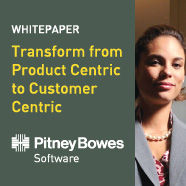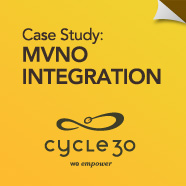"In order to increase customer satisfaction, service providers need to go beyond just providing total visibility to OSS/ BSS systems," Nibha Aggarwal, Director, Customer Management Product Marketing for Amdocs says. "Customers today 'expect' proactive notifications from service providers, so SPs need to put some intelligence in their systems, in addition to visibility, to identify emerging issues and problems, and take proactive action before the customer has to make a phone call."
Automating the 'How do I?' Calls
Aggarwal uses the example of the issues owners of the Samsung Galaxy are having with email configurations. "The SP should proactively notify all customers using Samsung Galaxy to inform them of the impending issue that may affect them," Aggarwal says. "In fact, SPs should even go a step further and fix this problem proactively before the customers are even aware of this issue. In terms of 'how' the customers want to be notified, email is at the top of the list, followed by SMS."
The Amdocs survey indicates about 56 percent of customers have a problem with either the device or SP during the first year of purchase. Of these, around 82 percent of the calls are "How do I" type of calls that have the potential to be deflected. About 46 percent of the support calls during first year of purchase of smartphone consumers are, "How do I.." type of calls.
Deflecting these types of customer service calls can mean a big savings in OPEX for CSPs in reduced call center staff and happier, better-served customers. And OSS/BSS players like Amdocs claim they can cut the cost of serving these customers in half.


"From our past experience, Amdocs can deflect up to 50 percent of these 'How do I…' type of calls," Aggarwal says. "Hence, up to a quarter, 23 percent, of the support calls during first year of purchase have the potential to be deflected to a smartphone self-service channel. As the cost of servicing a call via self service is about a tenth--in developed countries--of a live call, so SPs can see up to a 15 percent reduction in support costs to reduce OPEX; 80 percent reduction in support costs to be conservative, for 23 percent of the calls."
Of course, there are limitations on the amount of control CSPs should offer their customers. These limitations can easily be placed into three primary categories: technological, customer-centric and CSP-centric.
1. System/ technology limitations to self service
"Ironically, sometimes the biggest problems cannot be self-served," Aggarwal says. "For example, if the customer is having a network problem, they cannot connect to the network to self serve or get a proactive notification, and yet we know the survey shows that network/ coverage issue gets the most calls."
2. Customer rejects self service
For instance, billing disputes where the customer wants to talk to an agent to resolve an issue can't be made self serve. Buying or upgrading a plan or device is potentially another area where customers want to compare options and may want to speak with an agent or a retail store representative before making a final decision.
3. SPs do not want to make a function self serve
Providers might not want to allow subscribers to cancel a contract without speaking to a representative.








